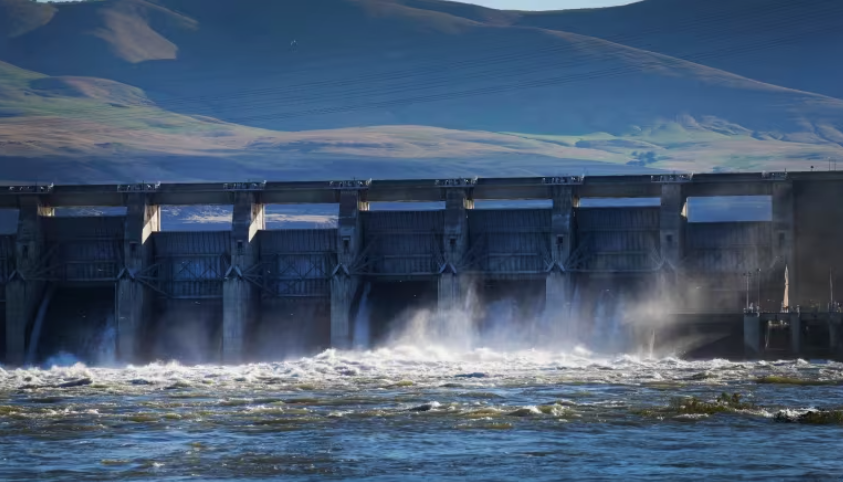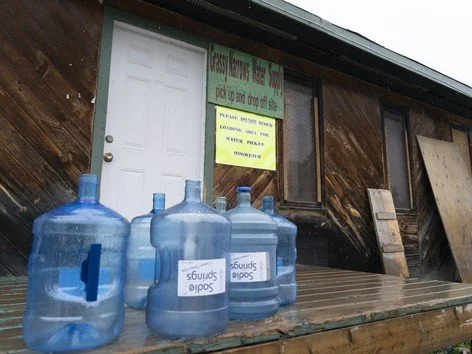Walk along the banks of the Columbia River in B.C. and you might be forgiven for thinking it's like any of the province's other big waterways. You might spot a sturgeon, or glimpse one of the more than 60 dams in the Columbia's watershed. But the Columbia is not like other rivers. For one, it crosses the U.S. border to empty into the Pacific in Oregon. The Columbia River basin is also a vital source of electricity, providing about 40 per cent of all U.S. hydroelectric power, while B.C. draws almost half of its total electrical generation from the region.
Not enough money coming from federal government to maintain Indigenous water treatment systems: PBO report
The Trudeau government has not set aside enough money to maintain and operate water treatments systems in Indigenous communities, according to a new report from the parliamentary budget officer. While the Liberals have more than enough money to build the systems, they are $138 million a year short on providing help to First Nations to maintain them, said Yves Giroux. Canada still has 43 long-term drinking water advisories in 31 Indigenous communities across the country, down considerably from when the Liberals first came to office. But the government admitted last year it would not meet its initial promise to address all of the advisories in the first five years in office.
City's plan to help Indigenous people with clean water trickling along
A plan to improve water services to Indigenous communities has lost a little current. The proposal is to dedicate 0.2 per cent of Barrie’s water/sewer revenue next year toward Water First and its efforts to improve water services in First Nations communities. The plan would cost about $100,000, or about $1.77 for the average Barrie household in 2022. It was to be part of 2022 budget talks next week, but that will have to wait. While city staff have started consulting local First Nations groups about the donation, those talks haven’t finished at this time. Water First, a Creemore-based non-government organization (NGO), has a program to train young Indigenous people from reserves to become certified in operating a water plant through a 15-month paid apprenticeship, which is where the $100,000 would be spent.
Neskantaga First Nation Still Doesn’t Have Clean Water
This past November marked 25 years since Neskantaga First Nation, located in Northwestern Ontario, was placed on a boil water advisory. In October 2020, over 250 Neskantaga residents were evacuated and transferred to a hotel in Thunder Bay after “an oily sheen was found in the Neskantaga water reservoir;” “high levels of hydrocarbons” were discovered in the water after testing. Residents were able to return after two months, but the boil water advisory remains. Chief Chris Moonias has called upon Ontario Premier Doug Ford to support Neskantaga First Nation in securing clean drinking water and properly trained water operators – Ford has yet to respond. Ending all boil-water advisories in Canada can no longer be delayed; Ford must act in accordance with the concerns of the Neskantaga First Nation immediately.
Government of Canada launches consultation process for new Canada Water Agency
“Through the Canada Water Agency, our government is looking to strengthen collaboration between the federal government, the provinces, territories, Indigenous peoples and other partners to find the best ways to safeguard our freshwater consultations are an important part of this process and I look forward to input from Canadians,” Terry Duguid said in a statement. Mr. Duguid is Parliamentary Secretary to Minister Wilkinson and has been key in the development process. The discussion paper, ‘Toward the Creation of a Canada Water Agency,’ presents key issues and provides an overview of the federal government’s existing activities to enhance freshwater management, and a virtual national freshwater policy forum is planned for January 27 and 28. A series of regional forums will be held in February that will provide additional opportunities to participate in consultations. The discussion paper and additional information can be found at placespeak.ca. Comments can be submitted until March 1.
Former Neskantaga contractor accused of cutting corners in other First Nations
“They cut corners every day, every day,” said Justin Gee, vice-president of First Nations Engineering Services Ltd. Gee said he encountered these recurring problems while overseeing the work of a construction firm, Kingdom Construction Limited (KCL), building a water treatment plant 10 years ago in Wasauksing First Nation, along the eastern shore of Georgian Bay, about 250 kilometres north of Toronto. “You have to be on them every step of the way,” said Gee, who was the contract administrator on the project. “You can’t leave them on their own.”
Halifax to probe problems around Williams Lake's falling water levels
Halifax’s vanishing Williams Lake could fill up again with a little help from the city, according to nearby residents. The water level had dropped by about 1.3 metres since late May when The Chronicle Herald featured one of the city’s favourite swimming lakes literally drying up on its front page in early September. But now a potential fix is being investigated for a dam that’s allowing water to flow too quickly to the sea.
Rule changes for boil-water advisories could impact communities, says Municipalities N.L.
A new ruling from the provincial government on boil-water advisories could impact communities that can't afford clean water, according to the president of Municipalities Newfoundland and Labrador. Municipal Affairs Minister Derrick Bragg said the new rule change will require municipalities looking for funding from the provincial government to make clean, safe drinking water their top priority. Towns under a boil-water advisory would have to address the advisory before they apply for funding.
A Mi’kmaq community’s fears of toxic water recede as Northern Pulp mill winds down
For decades, Pictou Landing First Nation has lived uneasily near an industrial plant emitting brown, foul-smelling waste and the effluent treatment facility they say causes respiratory and skin illnesses. Now, the mill is being mothballed. Ms. Francis, a member of Pictou Landing First Nation, fought for years to stop toxic wastewater from the Northern Pulp plant from being pumped into a tidal estuary next to her community. After decades of court battles, environmental studies and protests, people on the Nova Scotia reserve are hopeful they may one day be able trust their water and land again.










